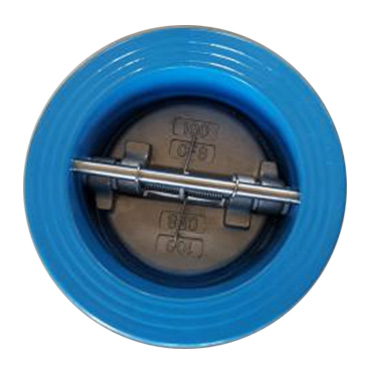8 月 . 31, 2024 12:20 Back to list
lift check valve
Understanding Lift Check Valves Essential Components in Fluid Systems
Lift check valves play a crucial role in various fluid systems, ensuring that the flow of liquids or gases moves in one direction while preventing backflow. These valves are particularly important in applications ranging from industrial processes to residential plumbing, as they maintain system efficiency and protect equipment from damage caused by reverse flow.
What is a Lift Check Valve?
A lift check valve is a type of valve that uses a movable disc or piston within the valve body to allow flow in one direction and close automatically to prevent backflow. The design typically consists of a round-shaped body with an inlet and outlet, a seat, and a disc that lifts off the seat as the flow pressure increases. When the pressure drops or reverses, the disc is pushed back onto the seat, effectively sealing off the reverse flow.
How Does It Work?
The operational mechanism of a lift check valve can be understood better by analyzing its anatomy. When fluid enters the valve from the inlet, it exerts pressure on the disc, causing it to lift away from the seat. This design ensures that fluid can flow freely in the intended direction. If the flow rate decreases or if reverse flow occurs, the pressure difference causes the disc to fall back onto the seat, thus closing the valve. The design of lift check valves can vary, including variations like tilting disc or vertical lift check valves, but the fundamental principle remains consistent.
Applications of Lift Check Valves
Lift check valves are commonly used in various systems, including
lift check valve

1. Water Supply Systems They prevent backflow into the main supply, ensuring the cleanliness and safety of water distribution.
2. Heating Systems In HVAC systems, they help maintain the proper circulation of fluids, preventing issues such as overheating and contamination.
3. Industrial Processes Many industrial applications utilize lift check valves to control liquid and gas flow in pipes, ensuring optimal operation without risking backflow that could disrupt machinery or processes.
4. Pumping Stations These valves protect pumps from damage caused by backflow, extending the lifespan of the equipment.
Advantages of Lift Check Valves
One of the primary benefits of lift check valves is their ability to handle high-pressure applications. They are usually favored for their reliability and straightforward installation. Additionally, the minimal pressure drop across the valve ensures that system efficiency is maintained. Another advantage is their durable construction; many lift check valves are made from robust materials such as stainless steel, bronze, or PVC, ensuring longevity in tough environments.
Conclusion
Lift check valves are indispensable in preventing backflow and ensuring the smooth operation of various fluid systems. Understanding their function and applications can significantly aid in the design, maintenance, and operational efficiency of plumbing, industrial systems, and HVAC applications. As technology progresses, ongoing innovations in valve design continue to enhance their effectiveness and reliability, solidifying their crucial role in fluid management systems around the world. By integrating lift check valves, engineers can ensure system integrity, promote safety, and enhance performance across a multitude of applications.
Share
-
Understanding the Differences Between Wafer Type Butterfly Valve and Lugged Butterfly ValveNewsOct.25,2024
-
The Efficiency of Wafer Type Butterfly Valve and Lugged Butterfly ValveNewsOct.25,2024
-
The Ultimate Guide to Industrial Swing Check Valve: Performance, Installation, and MaintenanceNewsOct.25,2024
-
Superior Performance with Industrial Swing Check Valve: The Essential Valve for Any SystemNewsOct.25,2024
-
Industrial Swing Check Valve: The Ideal Solution for Flow ControlNewsOct.25,2024
-
You Need to Know About Industrial Swing Check Valve: Functionality, Scope, and PerformanceNewsOct.25,2024